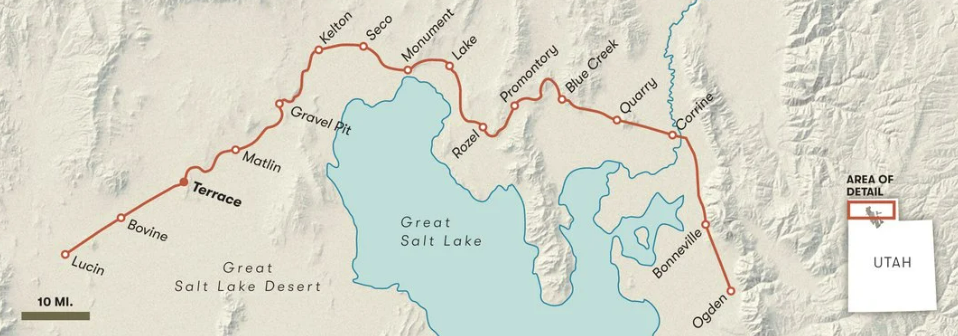The desert of far northwestern Utah stretches 60 miles from the arid border of Nevada to the saline-crusted shores of the Great Salt Lake. The terrain is exceedingly flat, punctuated only by the intermittent dry arroyo, rocky hill or volcanic cinder cone. Horned lizards and jack rabbits dart between thorny shrubs and scrawny box elder trees. Apart from the occasional cattle ranch or sheep-herding camp, the landscape appears desolate and lonely, forgotten in the expanse of geologic time.
But in a place called Terrace, identified today by little more than a single, bullet-ridden informational sign staked into the desert soil, a close look reveals a colorful story camouflaged in the sand. Scattered among dunes and tumbleweeds are small glass bottles, ceramic jars and abandoned wooden railroad ties, clues to a surprising history.
For the full article, please see: https://www.smithsonianmag.com/history/archaeologists-learning-lives-ch…

